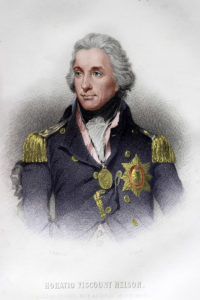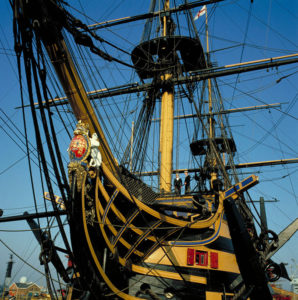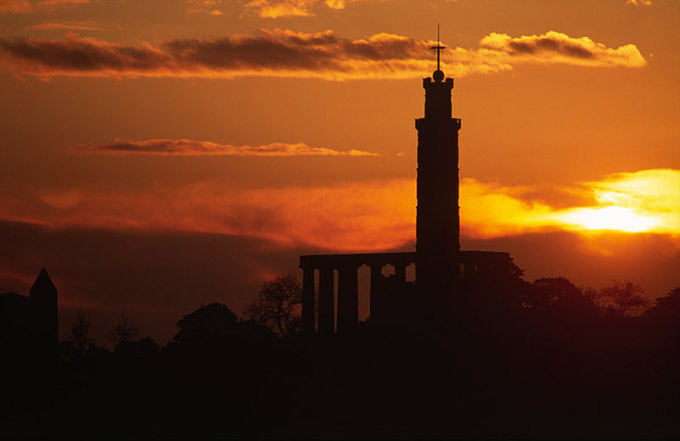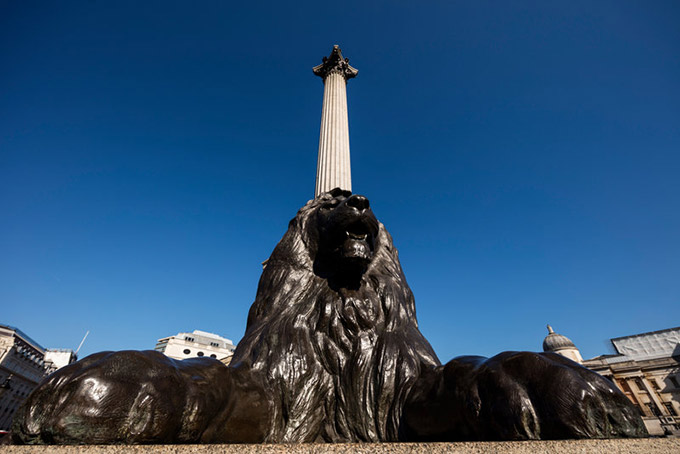On 21 October 1805, Vice-Admiral Horatio Nelson led the Royal Navy to victory over the combined French and Spanish fleets at the Battle of Cape Trafalgar on the Spanish coast. It was a day of triumph, but also of sadness – as Lord Nelson died in battle.
Who was Lord Nelson?

A charismatic and courageous leader, Nelson is seen as the greatest officer in the history of the Royal Navy. He joined the navy when he was just 12, sailed in the West Indies when he was 14, and was promoted to post-Captain at the age of 20. His first major injury came about during the French Revolutionary Wars towards the end of the 18th century. Nelson took charge of HMS Agamemnon, where he helped to capture Corsica. He was hit in the face by gravel while directing guns at Calvi and blinded in his right eye.
But what was semi-blindness? Certainly no hurdle for Nelson. At the Battle of Cape St Vincent in 1797, Nelson took command of HMS Captain. He helped capture two Spanish ships, leading the boarding party from one ship to the other. It was a heroic move and became known in the navy as ‘Nelson’s Patent Bridge for Boarding First Rates’.
Nelson’s second major injury came during an attempt to capture Santa Cruz in the Canary Islands. He lost his right arm while leading one of the landing parties.
Even one eye and one arm didn’t stop him. In 1798, he led a fleet of 14 ships in the Battle of Aboukir Bay near the Nile. Another successful assault took place in Denmark.
The Battle of Trafalgar was both his finest triumph and his last. With 27 ships, Nelson helped the Navy defeat the joint French and Spanish fleets of 33. He was hit by a musket ball from a French sharpshooter and died on HMS Victory.
The poet Bryon described Nelson as ‘Britannia’s God of War’.
What happened at the Battle of Trafalgar?

The Battle of Trafalgar was so important because it defined the Age of Sail and secured British dominion of the seas for the next century. The campaign was part of the Napoleonic Wars – the French military leader’s attempt to invade Britain. For a year and a half, Nelson blockaded the French fleet under Admiral Villeneuve in Toulon. In March 1805, Villeneuve’s fleet escaped from the harbour and Nelson followed it to the West Indies and back. The French were then stuck in Cadiz harbour in Spain. When they departed for the Mediterranean on 19 October, Nelson was waiting.
On 21 October, Nelson’s ship led the British fleet into battle off Cape Trafalgar against the French and Spanish fleet. At 11.48am, the flag signal ‘England expects that every man will do his duty’ flew from the masthead of HMS Victory. The ship engaged the French ship Bucentaure and then the Redoutable. Nelson fell to his fate from a shot by a French marksman on the Redoutable during battle. He died at 4.30pm when victory had been secured.
The Battle of Trafalgar was particularly intense. Many of the British ships were damaged and the battle was won largely due to Nelson’s bravery, ship-handling skills, strategy and faith in the navy. About 8,500 men were wounded and killed on both sides, while the British took about 20,000 prisoners. Today, Trafalgar Day commemorates the loss of lives and injuries on both sides.
Celebrations around the country
The largest celebration of Trafalgar Day takes place in London. Sea cadets march to the beat of a band from the Mall to Trafalgar Square, where they are joined by dignitaries from the Royal Navy. This year the parade is on Sunday, 22 October.
There is another ceremony in Birmingham, near the town’s own Nelson statue. The ceremony is led by the lord mayor. It involves men and women of HMS Forward, as well as naval and civic organisations.
In Portsmouth, a ceremony is traditionally held on board HMS Victory, the oldest commissioned warship in the world, and Nelson’s flagship at the Battle of Trafalgar. The day starts with the daily naval ceremony of Colours, when the White Ensign of the Royal Navy and the Union Jack are hauled up, followed by the Trafalgar signal (indicating Nelson’s message to the Fleet that “England expects that every man will do his duty”). Related events are held near the date. The National Museum of the Royal Navy in Portsmouth will hold a Trafalgar Night Dinner on 18 October.
Over on HMS Warrior in Portsmouth, Trafalgar Night will be celebrated this year on Friday, 20 October. Watch the parading of the beef (a naval tradition in which the meat is taken around the room) and listen to naval songs while you eat. The public can discover more about the life of the officers and men who served during the Battle of Trafalgar on board HMS Victory the ship on 24 October. A Pickle Night celebration (marking the arrival of HMS Pickle in Falmouth with news of the victory and Nelson’s death on 4 November 1805) will be held this year on Friday, 3 November. The event will include folk bands and a pie and mash supper.

There is another tribute to Nelson and the men who fought in battle in Edinburgh at the Nelson Monument on Carlton Hill. The Trafalgar flag signal is also flown on the day.






 © 2024
© 2024